Key takeaways:
- Buddhism emphasizes principles like Anicca (impermanence), Dukkha (suffering), and Metta (loving-kindness) to cultivate mindfulness and compassion.
- The Pali Canon and Dhammapada are key texts offering profound insights for personal transformation and reflection on thought patterns.
- Incorporating mindfulness into daily activities enhances presence and enriches relationships, turning mundane tasks into meaningful experiences.
- Establishing a tranquil space and practicing gratitude fosters a deeper connection to Buddhist teachings in everyday life.
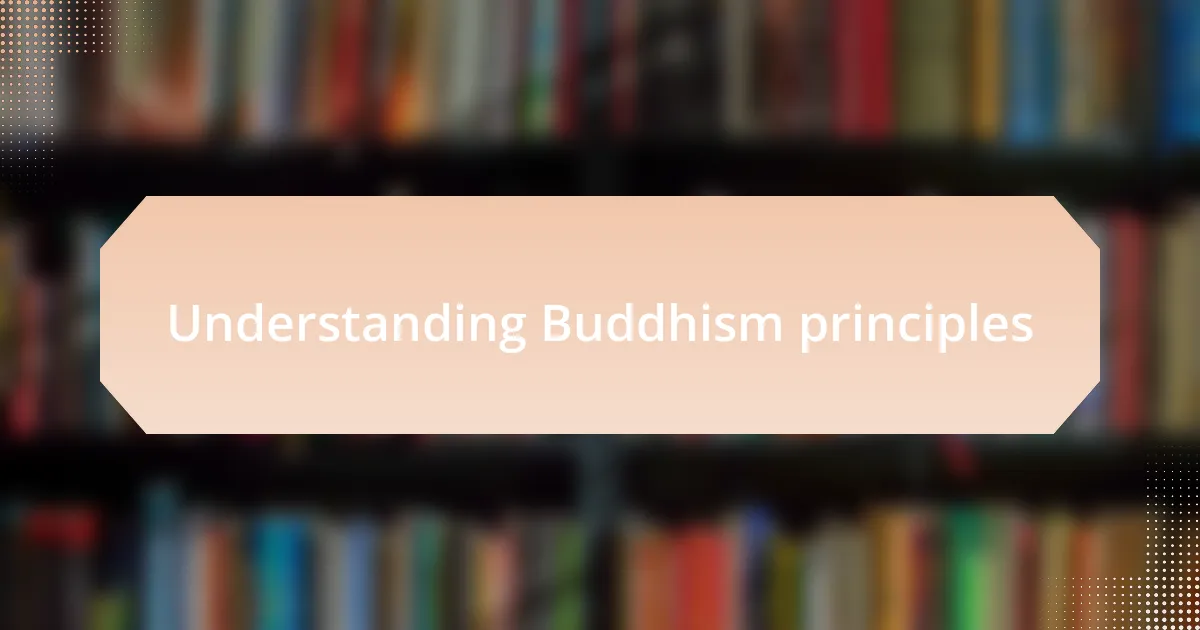
Understanding Buddhism principles
Buddhism is steeped in principles that encourage mindfulness and compassion, setting the foundation for a more harmonious life. I remember my first encounter with the concept of Anicca, or impermanence, which struck me deeply. It made me appreciate the fleeting nature of moments; have you ever paused and realized how quickly time slips away?
One of the most profound teachings is the idea of Dukkha, which I understood as suffering or dissatisfaction. Reflecting on my own experiences, I found that many of my challenges stemmed from attachment—whether to people, outcomes, or material things. It really made me question: what if we embraced life’s unpredictability instead of resisting it?
As I delved deeper into the noble truths, I discovered the importance of Metta, or loving-kindness. In my daily life, I practiced sending positive thoughts to others, even those I found difficult to interact with. It was a game changer; have you tried shifting your perspective when dealing with challenging people? The results can be surprisingly uplifting.

Key religious texts in Buddhism
Key religious texts in Buddhism offer a wealth of insights and guidance for practitioners seeking to incorporate these teachings into their daily lives. The Pali Canon, or Tipitaka, is often regarded as the most important text, containing the Buddha’s discourses and teachings. I remember poring over its verses, feeling a deep connection, especially to the Sutta Pitaka, where I learned about the Buddha’s direct teachings, each one resonating with my own journey.
Another crucial text is the Dhammapada, a collection of sayings attributed to the Buddha. One particular verse struck me: “You are what you think.” This simple yet profound line compelled me to reflect on my thought patterns and how they shape my reality. Have you ever noticed how shifting your thoughts can affect your mood and outlook?
The Lotus Sutra also plays a significant role in Mahayana Buddhism, emphasizing the universality of enlightenment. Engaging with its teachings opened my eyes to the interconnectedness of all beings, inspiring me to view my actions through a wider lens. I vividly recall a moment during meditation when this realization washed over me, urging me to act with greater compassion in my everyday interactions.
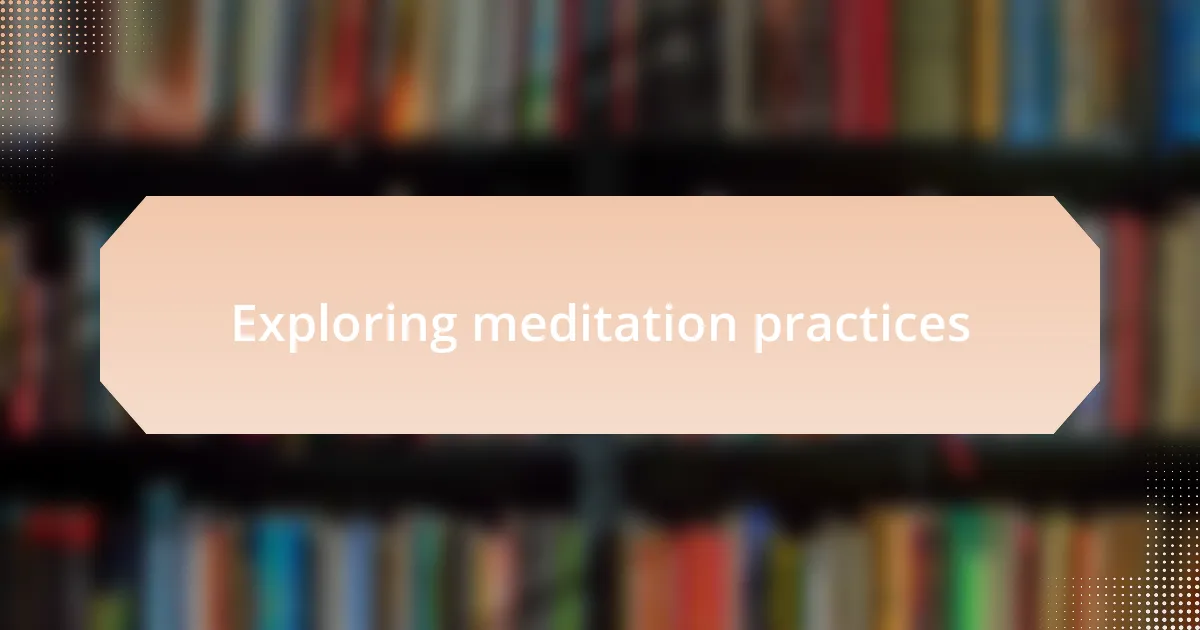
Exploring meditation practices
Meditation practices can take many forms, from sitting in silence to engaging in walking meditations. I’ve experimented with both, but I found that mindfulness meditation truly transformed my perspective. Sitting quietly for even just ten minutes allows me to observe my thoughts without judgment, creating a sense of clarity I had never experienced before.
During one meditation session, I focused on my breath and noticed how my mind frequently shifted to my to-do list. This awareness sparked a realization: I have the power to choose where I direct my attention. Have you ever felt overwhelmed by your thoughts? It turns out, with regular practice, I could gently guide my mind back to the present moment, discovering a sense of peace amidst the chaos.
Incorporating meditative practices into my daily routine has been a game-changer. Each morning, I set aside time to practice gratitude. After just a few weeks, I noticed a shift in my overall outlook. I started to appreciate small moments throughout my day that I had previously overlooked. Isn’t it remarkable how a few minutes of stillness can open our eyes to life’s beauty?
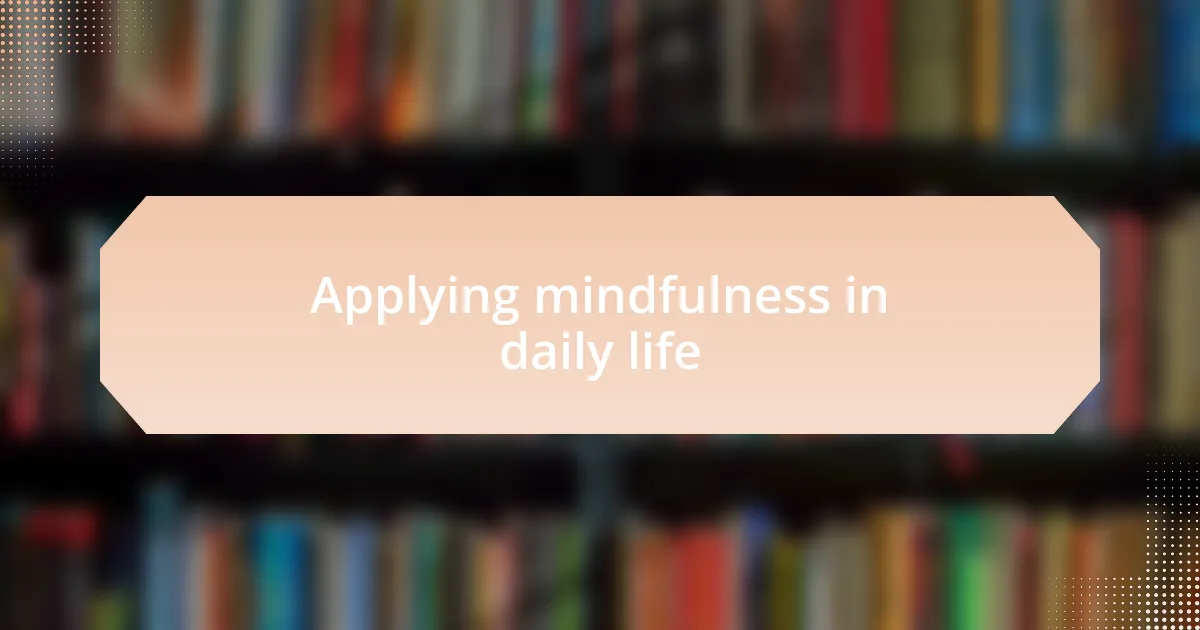
Applying mindfulness in daily life
Mindfulness isn’t just reserved for meditation; it’s something I weave into my everyday activities. I recall a particular moment when I was washing dishes, usually a mindless task. This time, I consciously focused on the warm water, the plates, and the bubbles. It felt liberating to become fully present, turning a mundane chore into a soothing experience. Have you ever tried to truly engage with a simple task like that?
Every time I sip my morning coffee, I apply mindfulness in a way that I never thought possible. Instead of scrolling through my phone or thinking about the day ahead, I take a moment to savor the aroma and warmth of the mug in my hands. This simple act grounds me and sets a positive tone for the entire day. It’s fascinating how adjusting our focus, even for a brief moment, can make such a difference in our mindset.
I’ve also found that practicing mindfulness during conversations has enriched my relationships. When I focus entirely on what the other person is saying, I notice subtleties in their tone and body language that I otherwise would have missed. This deeper level of connection fosters empathy and understanding. Have you noticed how being present with someone can transform your interactions? Just by slowing down and listening, we can cultivate stronger bonds and create a more meaningful dialogue.
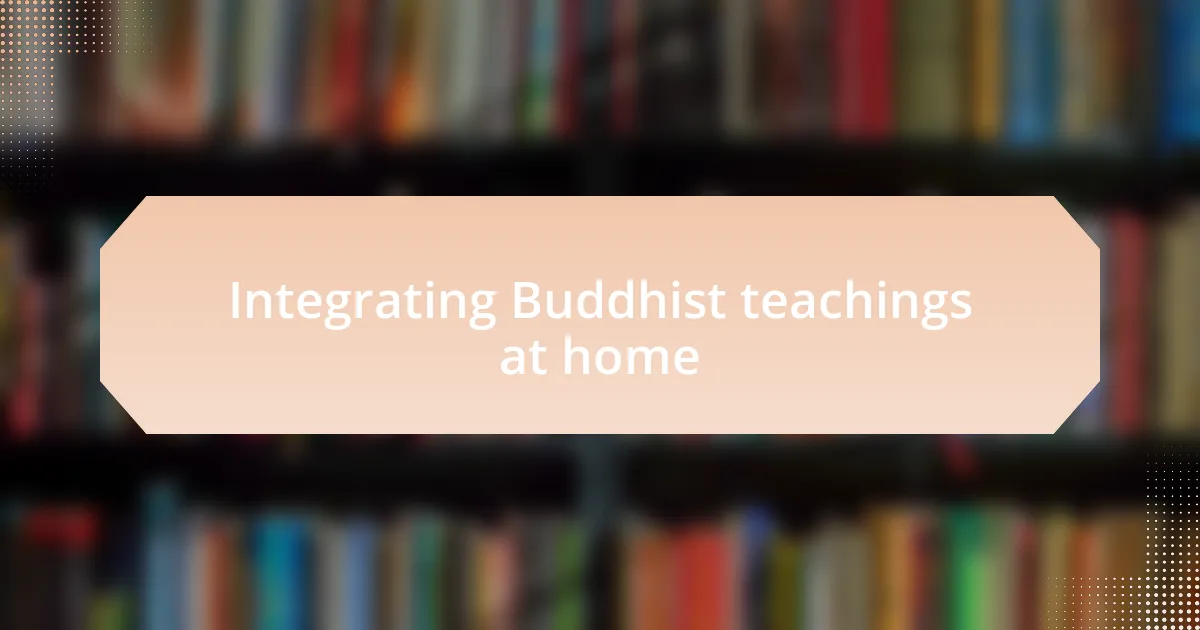
Integrating Buddhist teachings at home
Creating a tranquil space in my home has been essential for integrating Buddhist teachings. I decided to set aside a corner for meditation, filling it with soft cushions and a calming statue of Buddha. Each time I sit there, I’m reminded of the peace that comes from stillness. Have you ever created a sanctuary in your own space?
Incorporating simple rituals has also brought the essence of Buddhism into my everyday life. I’ve started lighting incense while I prepare meals, allowing the gentle aroma to envelop my kitchen. It transforms cooking from a chore into a mindful practice, reminding me to appreciate the nourishment I’m preparing for myself and loved ones. Can’t you almost feel the shift in energy that small acts like this can bring?
Lastly, embracing the concept of gratitude has reshaped how I view my everyday environment. I keep a small gratitude journal on my bedside table, jotting down three things I’m thankful for each night. This practice has shifted my mindset from one of scarcity to one of abundance, helping me recognize the richness of my life, even in ordinary moments. How often do you take the time to reflect on the good things in your life?

Personal stories of transformation
Embracing Buddhism has truly transformed my perspective on challenges. I remember a time when an unexpected job loss left me feeling adrift and anxious. Instead of succumbing to despair, I turned to the teachings of impermanence, realizing that change is a constant in life. How has your own understanding of uncertainty shaped your reactions to hardship?
I’ve also experienced a profound shift in relationships through the practice of compassion. I recall a heated argument with a family member where anger clouded my judgment. Instead of retaliating, I paused and tried to view the situation from their perspective. This small act of empathy not only diffused the tension but led to a deeper connection. Don’t you find that understanding others can lead to healing?
Lastly, I once practiced mindfulness during a typical morning commute. Rather than scrolling through my phone, I focused on my surroundings, tuning into the sounds of birds and the rustle of leaves. This simple act of presence made the commute feel less like a mundane task and more like a meditative journey. Have you ever tried to engage with the world around you in a new way?
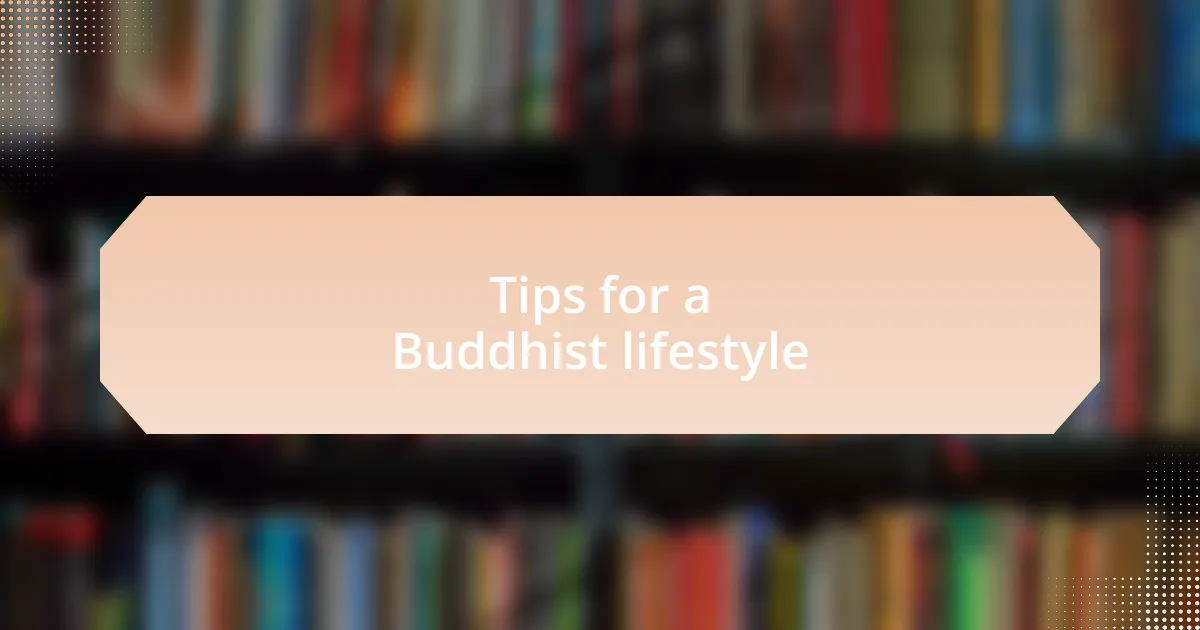
Tips for a Buddhist lifestyle
Cultivating a daily meditation practice can significantly enhance your Buddhist lifestyle. I remember when I first committed to sitting quietly for just five minutes each morning. The stillness taught me how to observe my thoughts without judgment, creating a space of calm that carried into my day. Have you ever noticed how just a few moments of silence can shift your mindset?
In addition to meditation, incorporating mindful breathing throughout the day can be incredibly beneficial. During stressful moments, I take a few deep breaths, allowing myself to reconnect with the present. This simple act grounds me and helps me respond thoughtfully rather than react impulsively. Have you tried using your breath as a tool to navigate life’s challenges?
Lastly, practicing gratitude daily has opened my eyes to the abundance around me. Each night, I jot down three things I appreciated that day, no matter how small. This practice has transformed my perspective, allowing me to see beauty in everyday moments. What simple joys have you taken for granted?